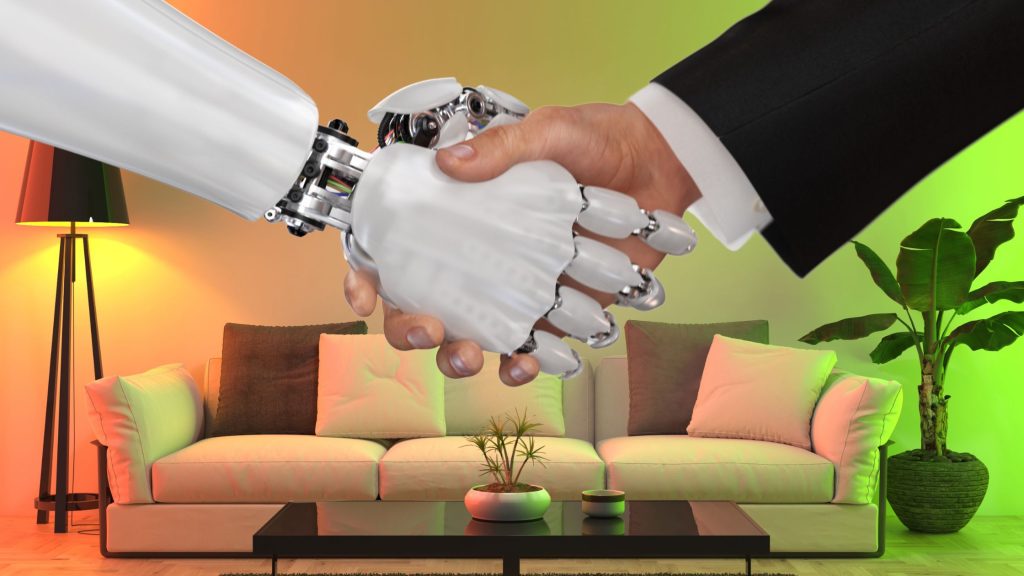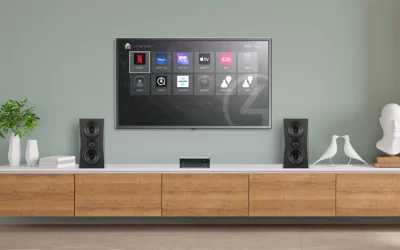It’s a grey Monday morning here in the Balaton HIghlands the kind that demands a second cup of coffee and invites a bit of reflection. And, as it happens, reflection is exactly what today’s post is about: how AI in systems integration, a topic I often speak about, is quietly but profoundly changing the way we design and deliver luxury smart homes at S3.
AI gets talked about a great deal in the abstract. You’ll hear breathless headlines about robots taking over jobs or some new chatbot mimicking Shakespeare. But I want to talk about AI in systems integration where it’s genuinely useful, already embedded in our daily work, and, frankly, rather exciting.
Because this isn’t science fiction. It’s Monday morning at S3.
The Shift: Where AI Fits into Smart Home Design
When most people picture a smart home, they think about the fun bits: Control4 cinema rooms with beautiful acoustics, lighting scenes that make every dinner party sparkle, music that follows you from the kitchen to the terrace. And yes, all of that is true. But behind the scenes? It’s a highly complex ecosystem that requires meticulous planning long before the first light switch or speaker is installed.
That’s where AI is starting to make a real difference in systems integration. Much like architects are now using AI to generate multiple design options for buildings, we’re using AI-powered tools to model and analyse entire smart home ecosystems before a single cable is pulled.
For us, and for Andrew, who serves as Chief Technology Architect here at S3, the goal has always been full systems integration. Not just “does this projector fit in the cinema room?” but “how will this cinema room interact with the lighting system, the shading, the networking, the HVAC, and the client’s home automation interface across the entire property?”
AI now allows us to simulate far more variables earlier in the design phase. We can run network heat maps, predict bandwidth demands, test different lighting configurations, and model energy consumption scenarios – all long before the walls are closed. And that saves everyone time, money, and the headache of mid-project surprises.
The Details Matter: From Materials to Maintenance
AI in systems integration isn’t just about big-picture design, though. It’s also helping us dig deeper into the practical choices that come with every project.
For example, selecting devices used to rely heavily on vendor recommendations, trade shows, and years of accumulated experience. While that experience remains irreplaceable, AI tools can now surface product updates, compatibility issues, or emerging solutions we might not have otherwise encountered – without waiting for the next industry expo.
Perhaps a new amplifier model has superior heat management. Or a different access point offers better performance for the stone walls so common in Balaton holiday homes. AI helps ensure we’re aware of those options while still early in the design phase.
Equally, as smart homes programming evolves, AI-powered systems can alert us to software updates, security patches, or new integrations we can offer our clients – keeping their systems running smoothly long after handover day.
And when it comes to ongoing support? Predictive maintenance models, powered by AI, allow us to proactively identify potential failures before they happen. We can monitor power consumption trends, network performance, and device health remotely, scheduling preventative service before anything disrupts the client experience.
Budgets, Timelines, and the Human Factor
One of the often-overlooked advantages of AI in systems integration is its role in forecasting. Budget overruns and scheduling delays are every project’s shadowy companions. Even with the best planning, luxury residential work inevitably involves late client requests, supply chain hiccups, or the occasional “while you’re here, could we also…” moment.
AI helps us analyse historical project data, market trends, and vendor lead times to build far more accurate cost estimates and timeline projections. It doesn’t eliminate surprises entirely, nothing does, but it gives us a much stronger hand when we’re sitting with a client reviewing proposals.
Just as importantly, it allows us to identify cost-saving opportunities without sacrificing system quality. Perhaps there’s a more efficient way to design a rack layout, select cabling runs, or optimise lighting zones – options we can model instantly thanks to AI’s number-crunching power.
But, and this is crucial, AI doesn’t replace human expertise. Andrew’s success as a technology architect stems from his ability to see the entire system holistically: not just how each room functions individually, but how the whole property operates seamlessly for the client’s lifestyle.
AI simply helps him get there faster.
The Future of AI in Systems Integration
One of the most transformative aspects of AI in systems integration is its growing ability to harness enormous datasets , far beyond what any one engineer or designer could practically process. In traditional smart home projects, we rely on experience, training, and supplier relationships to inform system design. But even the most seasoned expert operates within the limits of human bandwidth.
AI changes that equation. By analysing global project data, installation patterns, device failure rates, firmware compatibility issues, and even subtle patterns of client usage, AI can deliver insights that were simply out of reach a few years ago. We’re not just talking about helping select the right amplifier for a given room size, we’re talking about predicting how that amplifier will interact with the client’s existing power infrastructure, thermal management, control systems, and even the property’s fluctuating occupancy patterns.
For instance, some AI platforms now allow us to model complex network behaviours across multiple VLANs, factoring in latency, interference, and load balancing across dozens, sometimes hundreds, of simultaneously connected devices. In a luxury home with full Control4 automation, multi-room AV, lighting, security, and remote access, that level of foresight is no longer just helpful – it’s essential.
This is particularly important as client expectations continue to rise. Homeowners today are not simply asking for “smart lighting” or “good Wi-Fi”, they expect invisible systems that work flawlessly, adapt to their needs, and integrate seamlessly with evolving technologies. AI allows us to deliver on those expectations with greater confidence, precision, and efficiency – ensuring that every system we design not only works on Day One, but remains reliable for years to come.

AI in systems integration helps coordinate smart lighting scenes, blending technology and human design for modern living.
AI as a Creative Partner
Perhaps the most interesting part – and the part I find quite fun personally – is how AI can spark new ideas. Every project is unique, and occasionally, AI tools will suggest something we might not have considered: a new lighting fixture, an alternative speaker placement, or a network configuration better suited to a client’s complex property layout.
In the past, many of these options surfaced through long design meetings or after attending international trade shows. Today, we often see them pop up mid-design thanks to AI quietly scanning databases, product catalogs, and case studies worldwide.
The result? A richer set of options for our clients ,delivered faster, with greater confidence that every system is not only cutting-edge but also built on solid technical footing.
My Own Relationship With AI
Now, on a more personal note, this isn’t entirely new territory for me. While Andrew focuses on the design and programming side of AI in systems integration, I’ve been using AI for some time in the day-to-day running of S3 – from marketing to scheduling to content creation (including, you guessed it, blog posts like this one).
In fact, I spend part of my time helping other businesses adopt AI into their workflows through my consulting practice. If you’re curious how AI might help in your own business – whether in technology, management, or marketing – you can find more about that here.
The key point is this: AI isn’t some distant, complicated mystery. It’s a practical, evolving toolset that when applied thoughtfully makes excellent professionals even better at what they do.
The Road Ahead
As with most technologies, AI will continue to evolve. Will we someday see fully AI-designed smart homes? Perhaps. But for now, the real power lies in partnership: combining deep human expertise with AI’s ability to analyse, model, and optimise vast amounts of information quickly.
For luxury smart home clients, that means better designs, fewer surprises, smarter maintenance, and systems that genuinely enhance daily life without compromising aesthetics, performance, or serviceability.
And for those of us lucky enough to work in this space, well, it’s made rainy Monday mornings a bit more interesting.



0 Comments